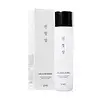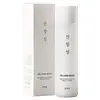What's inside
What's inside
 Key Ingredients
Key Ingredients

 Benefits
Benefits

 Concerns
Concerns

No concerns
 Ingredients Side-by-side
Ingredients Side-by-side

Water
Skin ConditioningButylene Glycol
HumectantNiacinamide
SmoothingPentylene Glycol
Skin Conditioning1,2-Hexanediol
Skin ConditioningHydrogenated Lecithin
EmulsifyingGlycerin
HumectantSoluble Collagen
HumectantHydroxydecyl Ubiquinone
AntioxidantPropanediol
SolventCyclodextrin
AbsorbentBroussonetia Kazinoki Root Extract
Skin ConditioningCeramide NP
Skin ConditioningBrassica Oleracea Acephala Leaf Extract
HumectantPersea Gratissima Fruit Extract
EmollientApium Graveolens Extract
Skin ConditioningBrassica Oleracea Italica Extract
AstringentLeontopodium Alpinum Extract
Skin ConditioningPrunus Amygdalus Dulcis Seed Extract
Skin ConditioningSodium Hyaluronate
HumectantMadecassoside
AntioxidantAllium Sativum Bulb Extract
Skin ConditioningVaccinium Angustifolium Fruit Extract
Skin ProtectingCistus Incanus Flower/Leaf/Stem Extract
Skin ConditioningGynostemma Pentaphyllum Leaf/Stem Extract
AntioxidantAvena Sativa Seed Extract
Skin ConditioningEcklonia Cava Extract
Skin ConditioningSchisandra Chinensis Fruit Extract
Skin ConditioningCaprylyl Glycol
EmollientCucurbita Pepo Fruit Extract
Skin ConditioningSpinacia Oleracea Leaf Extract
Skin ConditioningBeta-Glucan
Skin ConditioningUndaria Pinnatifida Extract
Skin ConditioningEruca Sativa Leaf Extract
Skin ConditioningEthylhexylglycerin
Skin ConditioningHyaluronic Acid
HumectantHydrolyzed Hyaluronic Acid
HumectantHydroxypropyltrimonium Hyaluronate
Potassium Hyaluronate
Skin ConditioningAcetyl Hexapeptide-8
HumectantSodium Hyaluronate Crosspolymer
HumectantSodium Acetylated Hyaluronate
HumectantHexapeptide-9
Skin ConditioningHexapeptide-11
Skin ConditioningPalmitoyl Pentapeptide-4
Skin ConditioningPalmitoyl Tripeptide-1
Skin ConditioningTripeptide-1
Skin ConditioningCopper Tripeptide-1
Skin ConditioningAdenosine
Skin ConditioningCarbomer
Emulsion StabilisingTromethamine
BufferingPulsatilla Koreana Extract
Skin ConditioningZanthoxylum Piperitum Fruit Extract
Skin ConditioningUsnea Barbata Extract
Polyglyceryl-10 Laurate
Skin ConditioningWater, Butylene Glycol, Niacinamide, Pentylene Glycol, 1,2-Hexanediol, Hydrogenated Lecithin, Glycerin, Soluble Collagen, Hydroxydecyl Ubiquinone, Propanediol, Cyclodextrin, Broussonetia Kazinoki Root Extract, Ceramide NP, Brassica Oleracea Acephala Leaf Extract, Persea Gratissima Fruit Extract, Apium Graveolens Extract, Brassica Oleracea Italica Extract, Leontopodium Alpinum Extract, Prunus Amygdalus Dulcis Seed Extract, Sodium Hyaluronate, Madecassoside, Allium Sativum Bulb Extract, Vaccinium Angustifolium Fruit Extract, Cistus Incanus Flower/Leaf/Stem Extract, Gynostemma Pentaphyllum Leaf/Stem Extract, Avena Sativa Seed Extract, Ecklonia Cava Extract, Schisandra Chinensis Fruit Extract, Caprylyl Glycol, Cucurbita Pepo Fruit Extract, Spinacia Oleracea Leaf Extract, Beta-Glucan, Undaria Pinnatifida Extract, Eruca Sativa Leaf Extract, Ethylhexylglycerin, Hyaluronic Acid, Hydrolyzed Hyaluronic Acid, Hydroxypropyltrimonium Hyaluronate, Potassium Hyaluronate, Acetyl Hexapeptide-8, Sodium Hyaluronate Crosspolymer, Sodium Acetylated Hyaluronate, Hexapeptide-9, Hexapeptide-11, Palmitoyl Pentapeptide-4, Palmitoyl Tripeptide-1, Tripeptide-1, Copper Tripeptide-1, Adenosine, Carbomer, Tromethamine, Pulsatilla Koreana Extract, Zanthoxylum Piperitum Fruit Extract, Usnea Barbata Extract, Polyglyceryl-10 Laurate
Water
Skin ConditioningBroussonetia Kazinoki Root Extract
Skin ConditioningNiacinamide
SmoothingButylene Glycol
HumectantGlycereth-26
HumectantCaprylic/Capric Triglyceride
MaskingPolyglyceryl-3 Methylglucose Distearate
EmulsifyingCetyl Ethylhexanoate
EmollientOryza Sativa Bran Extract
Skin ConditioningOryza Sativa Extract
AbsorbentSparassis Crispa Extract
Emulsion StabilisingGanoderma Lucidum Extract
Skin ProtectingInonotus Obliquus Extract
Skin ConditioningLentinus Edodes Extract
Skin ConditioningTremella Fuciformis Extract
HumectantVitis Vinifera Skin Extract
AntioxidantVitis Vinifera Root Extract
Skin ConditioningVitis Vinifera Seed Extract
AntimicrobialBroussonetia Kazinoki Bark Extract
Skin ConditioningDaucus Carota Sativa Root Extract
Skin ConditioningIlex Paraguariensis Leaf Extract
PerfumingCorchorus Olitorius Leaf Extract
Skin ConditioningBorago Officinalis Extract
EmollientMentha Viridis Extract
MaskingEriobotrya Japonica Leaf Extract
Skin ConditioningSodium Hyaluronate
HumectantHyaluronic Acid
HumectantSodium Acetylated Hyaluronate
HumectantSodium Hyaluronate Crosspolymer
HumectantPotassium Hyaluronate
Skin ConditioningHydroxypropyltrimonium Hyaluronate
Hydrolyzed Sodium Hyaluronate
Skin ConditioningHydrolyzed Hyaluronic Acid
HumectantCeramide NP
Skin ConditioningCeramide As
Skin ConditioningCeramide AP
Skin ConditioningCeramide Ns
Skin ConditioningGlutathione
Glyceryl Stearate
EmollientBeeswax
Emulsion StabilisingDipropylene Glycol
HumectantDipotassium Glycyrrhizate
HumectantPhenyl Trimethicone
Skin ConditioningCaprylyl Glycol
EmollientCellulose Gum
Emulsion StabilisingCholesterol
EmollientHydrogenated Lecithin
EmulsifyingPolypropanediol-4
EmulsifyingArginine
MaskingDisodium EDTA
Acrylates/C10-30 Alkyl Acrylate Crosspolymer
Emulsion StabilisingHydroxyacetophenone
Antioxidant1,2-Hexanediol
Skin ConditioningWater, Broussonetia Kazinoki Root Extract, Niacinamide, Butylene Glycol, Glycereth-26, Caprylic/Capric Triglyceride, Polyglyceryl-3 Methylglucose Distearate, Cetyl Ethylhexanoate, Oryza Sativa Bran Extract, Oryza Sativa Extract, Sparassis Crispa Extract, Ganoderma Lucidum Extract, Inonotus Obliquus Extract, Lentinus Edodes Extract, Tremella Fuciformis Extract, Vitis Vinifera Skin Extract, Vitis Vinifera Root Extract, Vitis Vinifera Seed Extract, Broussonetia Kazinoki Bark Extract, Daucus Carota Sativa Root Extract, Ilex Paraguariensis Leaf Extract, Corchorus Olitorius Leaf Extract, Borago Officinalis Extract, Mentha Viridis Extract, Eriobotrya Japonica Leaf Extract, Sodium Hyaluronate, Hyaluronic Acid, Sodium Acetylated Hyaluronate, Sodium Hyaluronate Crosspolymer, Potassium Hyaluronate, Hydroxypropyltrimonium Hyaluronate, Hydrolyzed Sodium Hyaluronate, Hydrolyzed Hyaluronic Acid, Ceramide NP, Ceramide As, Ceramide AP, Ceramide Ns, Glutathione, Glyceryl Stearate, Beeswax, Dipropylene Glycol, Dipotassium Glycyrrhizate, Phenyl Trimethicone, Caprylyl Glycol, Cellulose Gum, Cholesterol, Hydrogenated Lecithin, Polypropanediol-4, Arginine, Disodium EDTA, Acrylates/C10-30 Alkyl Acrylate Crosspolymer, Hydroxyacetophenone, 1,2-Hexanediol
Ingredients Explained
These ingredients are found in both products.
Ingredients higher up in an ingredient list are typically present in a larger amount.
1,2-Hexanediol is a synthetic liquid and another multi-functional powerhouse.
It is a:
- Humectant, drawing moisture into the skin
- Emollient, helping to soften skin
- Solvent, dispersing and stabilizing formulas
- Preservative booster, enhancing the antimicrobial activity of other preservatives
We don't have a description for Broussonetia Kazinoki Root Extract yet.
Butylene Glycol (or BG) is used within cosmetic products for a few different reasons:
Overall, Butylene Glycol is a safe and well-rounded ingredient that works well with other ingredients.
Though this ingredient works well with most skin types, some people with sensitive skin may experience a reaction such as allergic rashes, closed comedones, or itchiness.
Learn more about Butylene GlycolCaprylyl Glycol is a humectant and emollient, meaning it attracts and preserves moisture.
It is a common ingredient in many products, especially those designed to hydrate skin. The primary benefits are retaining moisture, skin softening, and promoting a healthy skin barrier.
Though Caprylyl Glycol is an alcohol derived from fatty acids, it is not the kind that can dry out skin.
This ingredient is also used as a preservative to extend the life of products. It has slight antimicrobial properties.
Learn more about Caprylyl GlycolCeramide NP is a type of ceramide.
Ceramides are intercellular lipids naturally found in our skin that bonds dead skin cells together to create a barrier. They are known for their ability to hold water and thus are a great ingredient for dry skin.
Ceramides are an important building block for our skin barrier. A stronger barrier helps the skin look more firm and hydrated. By bolstering the skin ceramides act as a barrier against irritating ingredients. This can help with inflammation as well.
If you would like to eat ceramides, sweet potatoes contain a small amount.
Read more about other common types of ceramides here:
Ceramide AP
Ceramide EOP
Hyaluronic acid is naturally found in healthy skin. It is a humectant, meaning it draws moisture to your skin.
This ingredient helps hydrate, soothe, and protect the skin.
What makes hyaluronic acid so hydrating? It has the capacity to bind or hold large amounts of water.
Fun fact: It is already naturally found in our bodies, such as the fluids of our eyes and our joints.
Studies find this ingredient to have anti-inflammatory and anti-microbial properties. This can help speed up wound-healing.
Hyaluronic acid can be irritating if the molecule has a low-molecular weight, or if the molecules are small.
One study found low-molecular weight hyaluronic acid to be pro-inflammatory, meaning some people may experience irritation. This is because our bodies use hyaluronic acid in the wound-healing process to signal to our bodies, via irritation, that something needs healing.
The same study found high-molecular weight hyaluronic acid to be anti-inflammatory.
These are some other common types of Hyaluronic Acid:
Learn more about Hyaluronic AcidHydrogenated Lecithin is created from the hydrogenation of lecithin (a group of phospholipids). Hydrogenation is a chemical reaction between hydrogen and another element.
This ingredient is an emollient and emulsifier. As an emollient, it helps soften skin by trapping moisture within. As an emulsifier, it prevents oil and water ingredients from separating.
Hydrolyzed Hyaluronic Acid is a form of hyaluronic acid. It is created by the hydrolysis of hyaluronic acid with a high molecular weight. Once created, Hydrolyzed Hyaluronic Acid has a low molecular weight.
Low molecular weight HA has been shown to hydrate and increase elasticity of the skin. Increasing elasticity is also associated with reduction of wrinkle depth.
One study found topical low molecular weight hyaluronic acid may be considered for the treatment of rosacea in the adult population. However, we always recommend speaking with a professional about your skin concerns.
Hyaluronic acids are a humectant. This means they draw moisture from the air. Hyaluronic acids help moisturize, soothe, and protect the skin.
Read more about other common forms of hyaluronic acid:
Learn more about Hydrolyzed Hyaluronic AcidThis form of hyaluronic acid is produced through fermentation.
According to a manufacturer, it has a positive charge by ionic binding to help moisturize and give hair a smooth feel. This is why you'll find this ingredient in shampoos and body washes.
Niacinamide is a multitasking form of vitamin B3 that strengthens the skin barrier, reduces pores and dark spots, regulates oil, and improves signs of aging.
And the best part? It's gentle and well-tolerated by most skin types, including sensitive and reactive skin.
You might have heard of "niacin flush", or the reddening of skin that causes itchiness. Niacinamide has not been found to cause this.
In very rare cases, some individuals may not be able to tolerate niacinamide at all or experience an allergic reaction to it.
If you are experiencing flaking, irritation, and dryness with this ingredient, be sure to double check all your products as this ingredient can be found in all categories of skincare.
When incorporating niacinamide into your routine, look out for concentration amounts. Typically, 5% niacinamide provides benefits such as fading dark spots. However, if you have sensitive skin, it is better to begin with a smaller concentration.
When you apply niacinamide to your skin, your body converts it into nicotinamide adenine dinucleotide (NAD). NAD is an essential coenzyme that is already found in your cells as "fuel" and powers countless biological processes.
In your skin, NAD helps repair cell damage, produce new healthy cells, support collagen production, strengthen the skin barrier, and fight environmental stressors (like UV and pollution).
Our natural NAD levels start to decline with age, leading to slower skin repair, visible aging, and a weaker skin barrier. By providing your skin niacinamide, you're recharging your skin's NAD levels. This leads to stronger, healthier, and younger looking skin.
Another name for vitamin B3 is nicotinamide. This vitamin is water-soluble and our bodies don't store it. We obtain Vitamin B3 from either food or skincare. Meat, fish, wheat, yeast, and leafy greens contain vitamin B3.
The type of niacinamide used in skincare is synthetically created.
Learn more about NiacinamidePotassium hyaluronate (PH) is a salt form of hyaluronic acid and has similar skin hydrating benefits.
Similar to hyaluronic acid, PH is able to draw and hold moisture to your skin. This helps keep skin soft and hydrated.
Fun fact: PH is used in eye drops and injectable treatments for joint disorders. It has lubricating and tissue-repair properties.
Learn more about Potassium HyaluronateSodium Acetylated Hyaluronate is a type of Hyaluronic Acid.
Hyaluronic Acids help moisturize, soothe, and protect the skin.
Read about common types of Hyaluronic Acid here:
Sodium Hyaluronate
Hydrolyzed Hyaluronic Acid
Hyaluronic Acid
Sodium Hyaluronate is hyaluronic acid's salt form. It is commonly derived from the sodium salt of hyaluronic acid.
Like hyaluronic acid, it is great at holding water and acts as a humectant. This makes it a great skin hydrating ingredient.
Sodium Hyaluronate is naturally occurring in our bodies and is mostly found in eye fluid and joints.
These are some other common types of Hyaluronic Acid:
Learn more about Sodium HyaluronateSodium Hyaluronate Crosspolymer is a type of hyaluronic acid. In fact, it is modified version of hyaluronic acid.
The structure of Sodium Hyaluronate Crosspolymer allows it to stay in the skin's top layer for a longer period of time. This allows for even more hydration and humectant action than hyaluronic acid.
These are some other common types of Hyaluronic Acid:
Learn more about Sodium Hyaluronate CrosspolymerWater. It's the most common cosmetic ingredient of all. You'll usually see it at the top of ingredient lists, meaning that it makes up the largest part of the product.
So why is it so popular? Water most often acts as a solvent - this means that it helps dissolve other ingredients into the formulation.
You'll also recognize water as that liquid we all need to stay alive. If you see this, drink a glass of water. Stay hydrated!
Learn more about Water